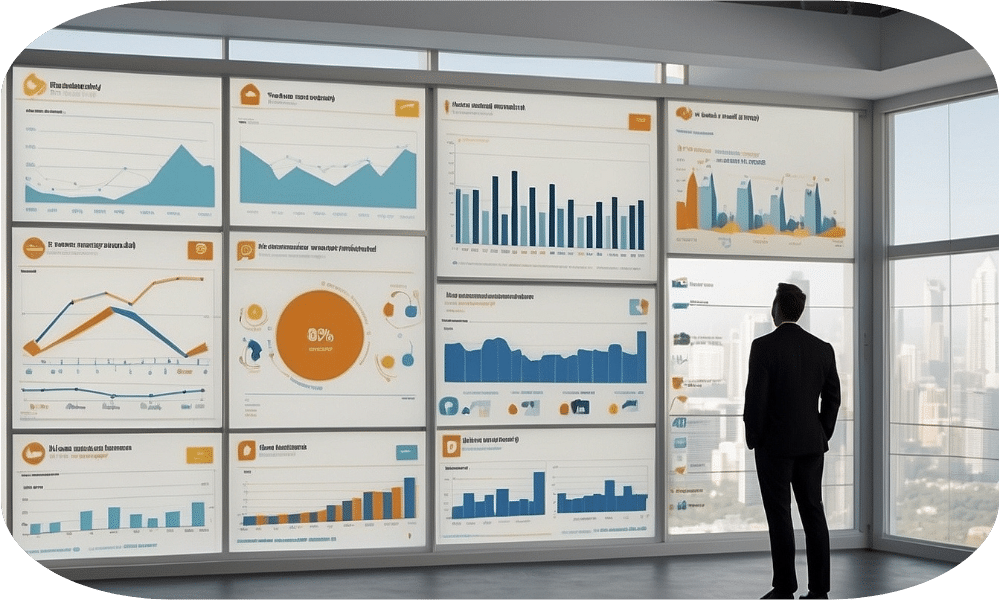Prepare Your Business for a Recession
What in the world is going on with the economy?
If you’ve been to the gas pump or checked your stock portfolio recently, you’re aware that the economy is changing. Consumers are feeling squeezed, and workers are demanding more to cover their expenses. For small and medium-sized business owners, these changing conditions and Federal Reserve policy require proper planning to survive the potential headwinds.
Are we entering a recession?
According to Goldman Sachs, the US economy has a 30% chance of entering a recession in the next 12 months and a 50% chance of a recession in the next 24 months. Others, like former New York Fed President Bill Dudley, are calling it inevitable.
SMBs (Small and Mid-Sized Businesses), often the first to feel the pressures of an economy in decline, are already showing warning signs. In May 2022, the Job Creators Network Foundation’s Small Business IQ poll showed small business sentiment fell to the lowest levels on record. Even if the US avoids a recession, small businesses are already feeling the pain.
What is causing the market correction?
In the 2008 recession, the collapse of the housing bubble led to decreased consumer demand, higher unemployment, and the threat of deflation. Today the US economy has low unemployment with higher wages and higher prices, due to global conflict and supply chain disruptions.
Today’s situation also reminds many economists of the downturn in the early 1980s. When an Energy crisis led to soaring prices, Fed Chairman Paul Volcker raised the fed funds rate from 11% to 20%, triggering a recession to solve inflation. While the US economy bounced back strong, some heavy industries like steel and mining suffered permanently. Today mirrors this with the Federal reserve raising interest rates to reduce inflation. Many worry today’s conditions will lead to a downturn as it did then.
In any recession, there will be losers and eventual winners. Businesses that understand the risks their industry faces and create strong plans to address them are more likely to weather a coming recession.
How can my business prepare for a market correction?
The best recession strategies involve smart planning and the ability to quickly identify opportunities when they emerge. These areas of focus are critical for weathering whatever the economy may throw at your business.
Protect your cash flow
Cash is the life blood of the business. In uncertain times, executives must obsess over the health of their cash flow to survive the ups and downs. There are a few ways for businesses to improve the health of their cash flow through potential downturns:
- Collect Account Receivables Faster: ensure on-time payments from customers with great service, change billing periods to more frequent billing, and create AR dashboards visible to everyone
- Disburse Accounts Payable More Slowly: negotiate favorable terms with suppliers early, use credit cards when possible, delay or partial pay APs in worst case scenario
- Refinance what you can: tap an asset-based credit line, open or extend a line of credit, or Consider purchase order financing to keep things on track through cash flow disruption
- Prepare for Small Business Loans: have paperwork ready if SBA loans become available and necessary for your business
Conduct Routine SWOT Analysis
While making accurate economic predictions is difficult, businesses can still plan for higher costs in the short term and potential decline in customer demand. Conducting regular assessments of Strengths, Weaknesses, Opportunities and Trends (SWOT analysis) can help executives prepare for potential impacts to their business. Making this a part of weekly management meetings and keeping the information in one central place can help your team strategize for surviving a recession and emerging stronger.
Talk to your customers
Conversations with customers are another crucial piece for understanding how economic conditions can affect your business. As EO Louisiana President Erik Frank told Align back in March 2020, executives should aim for daily customer conversations to understand the challenges facing their customers. During COVID, these conversations helped leaders identify strategies to meet changing customer needs.
Reduce unnecessary costs
Today, your dollar won’t go as far as it did yesterday thanks to inflation. Consumers have already started cutting expenses on things like retail shopping, food, transportation, and streaming services. SMBs are also feeling this crunch and strategizing how to reduce costs.
Firstly, executives should strive to understand their full cost structures and identify areas for immediate cutbacks, like unnecessary subscriptions or unused capacity. Then, based off cash flow scenario planning, identify other potential areas to renegotiate contracts or cut back if need be.
Restructure your labor force
With the labor market still very hot, maintaining top talent while keeping costs in check. Maintaining or moving to distributed work can help save companies money in terms of office expenses and wages. One study cited in Bloomberg estimates that firms will save $206 Billion moving jobs to remote work because workers are willing to accept smaller pay increases.
Tools to help you get through a recession
Tools that help your business save time and act quickly are crucial investments heading into a recession. Having a central way to track key data and successfully execute your strategy builds resiliency and responsiveness. Here’s how:
- Integrate all your systems with Align’s integrations so you can save time and access all your critical data in one place
- Automate workflows to gain efficiency and allocate precious time resources
- Track your business’s critical numbers with visualization dashboards to quickly see where you may be falling behind
- Document your strategic plans and SWOT analysis to define how your business will react during a potential downturn
- Execute on your goals and always know where you stand. Increase your chances of successfully weathering potential storms and emerging stronger
In this environment, business leaders must improve efficiency while cutting costs. Efficiency gains from strategic planning software like Align help businesses execute and grow through uncertainty.




